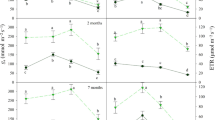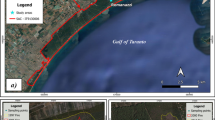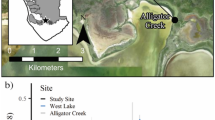Abstract
The growing desire to make the urban environment more sustainable from an ecological point of view has stimulated research on the architectural and agronomic aspects of green roofs. The practical realisation of green roofs, is however limited by economic and ecological issues. More specifically, water availability is the most limiting factor, and is likely to be ever more so in the future in the light of climate change. For this reason, we evaluated the agronomic performance of several xerophytes in a simulated dry green roof. Seeds of 20 species were collected in typically dry habitats (abandoned quarries, rocky soils, dunes, etc.) and studied in the laboratory for germination ecology. In cases of strong dormancy, methods were tested to stimulate germination and their germination ecology was studied. The resulting seedlings were transplanted in spring 2008 in two green roof types that differ in substrate depth (150 and 200 mm) made up of lapil, pumice, zeolites and peat, resting on a drainage layer of hydroperlite. Temperature and humidity in the substrate and drainage layer were measured during the whole test period. Survival of the seedlings in both substrate depths was almost 100%, favoured by a rainy spring. Most of the tested species showed an excellent performance during the hot and dry summer months in terms of survival rates, growth, and vegetation cover dynamics, notwithstanding the difficult ecological conditions (temperatures around 50°C; hydric potential Ψ -15 bars). Furthermore, most of the species had a long flowering stage in the first year of growth. Plants in the green roof with the deeper substrate depth produced, for most of the tested taxa, a significantly higher vegetation cover and growth compared to when they were placed in the 150 mm substrate. The results of this study show that some Mediterranean xerophytes have biological characteristics suitable for their use in dry green roofs, although an irrigation system for emergency use seems advisable. To conclude, further research should focus on long term evaluation of green roof vegetation in terms of plant survival and flowering dynamics.



Similar content being viewed by others
References
Benvenuti S (2004) Weed dynamics in the Mediterranean urban ecosystem: ecology, biodiversity and management. Weed Res 44:341–354
Currie BA, Bass B (2008) Estimates of air pollution mitigation with green plants and green roofs using the UFORE model. Urban Ecosys 11:409–422
Davies WJ, Zhang J (1991) Root signals and the regulation of growth and development of plants in drying soil. Annu Rev Plant Physiol Plant Mol Biol 42:55–76
Dunnett N, Nagase A, Hallam A (2008a) The dynamics of planted and colonising species on a green roof over six growing seasons 2001–2006: influence of substrate depth. Urban Ecosys 11:373–384
Dunnett N, Nagase A, Booth R, Grime (2008b) Influence of vegetation composition on runoff in two simulated green roof experiments. Urban Ecosys 11:385–398
Dunnett N, Nagase A, Hallam A (2008c) The dynamics of planted and colonising species on a green roof over six growing seasons 2001–2006: influence of substrate depth. Urban Ecosystem 11:373–384
Gaston KJ, Richard M, Smith RM, Thompson K, Warren PH (2005) Urban domestic gardens (II): experimental tests of methods for increasing biodiversity. Biodivers Conserv 14:395–413
Getter KL, Rowe DB (2008) Media depth influences Sedum green roof establishment. Urban Ecosys 11:361–372
Getter KL, Rowe DB, Robertson GP, Cregg BM, Andresen JA (2009) Carbon sequestration potential of extensive green roofs. Environ Sci Technol 43:7564–7570
Grime JP (1974) Vegetation classification by reference to strategies. Nature 250:26–31
Kosareo L, Ries R (2007) Comparative environmental life cycle assessment of green roofs. Build Environ 42:2606–2613
Le Houérou HN (1996) Climate change, drought and desertification. J Arid Environ 34:133–185
Oberndorfer E, Lundholm J, Bass B, Coffman RR, Doshi H, Dunnett N, Gaffin S, Köhler M, Liu KKY, Rowe B (2007) Green roofs as urban ecosystems: ecological structures, functions, and services. Bioscience 57:823–833
Onmura S, Matsumoto M, Hokoi S (2001) Study on evaporative cooling effect of roof lawn gardens. Energ Build 33:653–666
Peñuelas J, Gordon C, Llorens L, Nielsen T, Tietema A, Beier C, Bruna P, Emmett B, Estiarte M, Gorissen A (2004) Non-intrusive field experiments show different plant responses to warming and drought among sites seasons and species in a North-South European gradient. Ecosystems 7:598–612
Prado RTA, Ferreira FL (2005) Measurement of albedo and analysis of its influence on the surface temperature of building roof materials. Energ Build 37:295–300
Rees WE (1997) Urban ecosystems: the human dimension. Urban Ecosys 1:63–65
Shinomura T (1997) Phytochrome regulation of seed germination. J Plant Res 110:151–161
Spala A, Bagiorgasa HS, Assimakopoulos MN, Kalavrouziotis J, Matthopoulos D, Mihalakakou G (2008) On the green roof system. Selection, state of the art and energy potential investigation of a system installed in an office building in Athens, Greece. Renew Energ 33:173–177
Spolek G (2008) Performance monitoring of three ecoroofs in Portland, Oregon. Urban Ecosys 11:349–359
Spokas K, Forcella F (2009) Software tools for weed seed germination modeling. Weed Sci 57:216–227
VanWoert ND, Rowe DB, Andresen JA, Rugh CL, Xiao L (2005) Green roof stormwater retention: effects of roof surface, slope, and media depth. J Environ Qual 34:1036–1044
Wong NH, Taya SF, Wonga R, Ong CL, Sia A (2003) Life cycle cost analysis of rooftop gardens in Singapore. Build Environ 38:499–509
Author information
Authors and Affiliations
Corresponding author
Appendix
Appendix
Germination ecology
Materials and methods
Seed germination test
Seeds were disinfected with sodium hypochlorite (0.5% v/v) for 10 min before use, air dried, and imbibed on a single sheet of moistened filter paper (Whatman n. 1) and placed (50 seeds each) in 12 cm Petri dishes. Seeds were incubated in climate cabinets in different conditions of continuous white light (or darkness) and constant temperature (20°C). White light was obtained by using fluorescent tubes (Philips THL 20 W/33) at the intensity of roughly 50 µmol m−2 s−1. A spectroradiometer (model 1,800, Licor Inc., Lincoln, NE, USA) was used for the control of irradiance. In some cases seed treatments were necessary to reach a sufficient dormancy-breaking: 1) soaking with concentrated sodium hypochlorite (10 min followed by seed washing); 2) seed soaking with 200 ppm of gibberellic acid (GA3); 3) seed extraction from the indehiscent fruits (Table 4). Germinated seeds were counted daily at cotyledon appearance. Germination counts were stopped when final germination percentages were reached. Mean germination time (MGT) was calculated as:
Where n is the number of germinated seeds per day, g is the number of days after seeding, and N is the total number of germinated seeds.
Result and discussion
Seed germination
High germination rates (>90%) were observed only in 4 species: Dianthus cartusianorum, Verbascum thapsus, Satureja montana and Lavandula stoechas (Table 4), but in the case of the latter species germination occurred after a treatment with GA3 which was necessary to remove the strong dormancy initially observed in non treated seeds Pre-germination treatments were necessary also for Critmum maritimum (extraction of the seed from the fruit), Euphorbia pythiusa, Othanthus maritimus (soaking with sodium hypochlorite), Glaucium flavum and Scrophularia canina (soaking with GA3). Total dormancy was observed in the case of Sedum rupestre, even though various kinds of pre-germination treatments were performed, and the species was therefore successfully propagated by cuttings. The other species had germination rates between 22 and 70%, which can be considered acceptable considering that most wild plants have some kind of physiological, phyisical and/or morphological dormancy mechanism. Significantly different (p < 0.05 or p < 0.01) light requirements were observed in seven species (Crithmum maritimus, Dianthis cartusianorum, Euphorbia pythusa, Helichrysum spp., Glaucium flavum and Leontodon tuberosus), probably mediated by phytochrome, a typical chrome-protein pigment which, activated by light, elicits germination (see Shinomura 1997). The other species were indifferent to light, thereby underlining lower requirements in terms of space (underground depth of seed) and time (periods of the year with more or less light). Average germination time ranged between 1 week of the three Helychrisum species and 1 month of Othanthus maritimus. On average, most species had incubation times which ranged between 10 and 20 days. The only species in which light affected speed of germination was Dianthus cartusianorum, which germinated in a significantly slower longer time in darkness conditions.
Conclusion
Dormancy of the seeds tends to hinder their propagation, although some treatments are available to partially remove the dormancy, resulting in sufficient germination rates. Vegetative propagation is a possible alternative but was necessary only for the species Sedum rupestre which had an apparently unbreakable dormancy.
Rights and permissions
About this article
Cite this article
Benvenuti, S., Bacci, D. Initial agronomic performances of Mediterranean xerophytes in simulated dry green roofs. Urban Ecosyst 13, 349–363 (2010). https://doi.org/10.1007/s11252-010-0124-9
Published:
Issue Date:
DOI: https://doi.org/10.1007/s11252-010-0124-9




